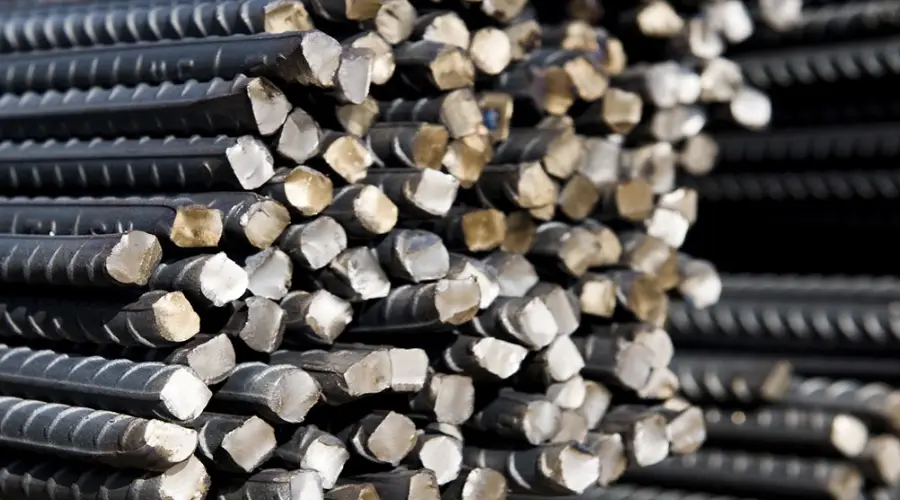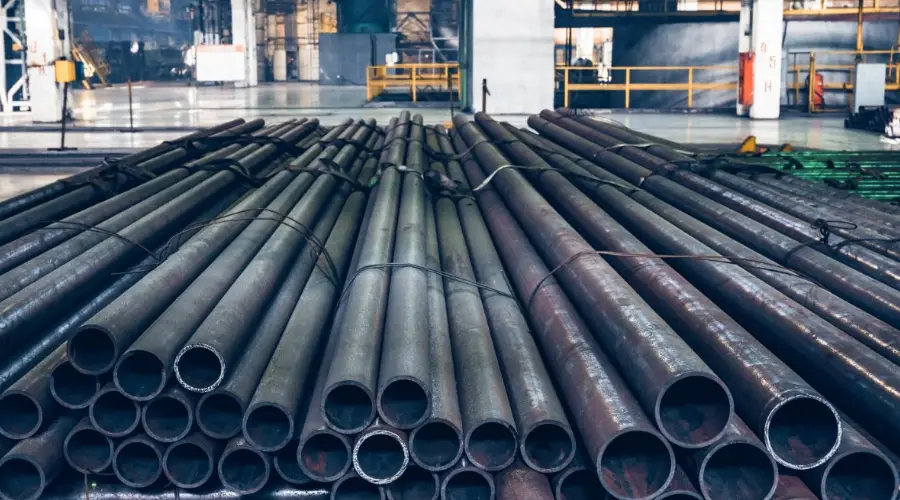Steel has become an integral part of the construction industry. This is the most common and durable material composed of carbon content including 0.03% to 1.075% and other elements. Probably, 80 to 90% of tools, equipment and machinery around you will be made of steel. There is proven evidence to state that steel is an indispensable part of the construction industry.
Gone are the days, buildings were used with the same type of steel. With technological advancements, the market is introduced with many varieties of steel to meet the purpose of individual construction projects.
The points to be highlighted are that steel is lower cost and has high tensile strength. Read below to explore the types of steel that play a crucial role in today’s construction projects:
Common Types of Steel Used in Construction

Rebar Steel
Rebar steel is also known as fortifying or reinforcing steel made of carbon steel. It is used as a strain device to hold the structure tightly even under high pressure. Rebar steels are used in Raft Foundations
This suits well for reinforced concrete or masonry structures to provide extra strength and sturdiness. Certainly, rebar steel is available in various elasticities, strengths, and chemical compositions. It comes in two primary grades, Grade 40 and Grade 60 – which is the minimum and maximum yield strength (40,000 to 60,000 psi).
The list of rebar steel includes:
- TMT steel bars
- Plain steel wire for concrete reinforcement
- Low-alloy steel
- Axel steel
- Low-carbon steel bars
- Stainless steel
- Epoxy-coated steel bars for welded deformed steel
Carbon Steel

Carbon steel is composed of various compounds like silicon, carbon, sulfur, manganese and phosphorus impurities. The strength and elasticity of this steel are determined by the amount of carbon present in it. The higher the carbon content, the greater the strength it contains.
It is used in different ranges of projects because of its extreme resistance capacity against heat, fire, scaling and corrosion. The carbon steel’s yield strength extends from 39900 to 48400 psi.
The types of carbon steel such as:
- High carbon
- Low carbon
- Medium carbon
Alloy Steel
Alloy steel is generally divided into two types: Low alloy steel and High alloy steel. Low alloy steel holds significant benefits, suitable for various applications like studying outlets and seamless rolling ring forging. In contrast, the high alloy steel helps hold chemicals, pharmaceutical equipment, mining materials and liquids.
It is the cheapest building steel alternative with enhanced temperature resistance, hardenability and reduced grain growth. Their yield strength lies between 36,000 to 86,000 psi.
Structural Steel
Structural steel is one kind of common construction material, making it a required structural steel shape. It is produced with certain standards of chemical composition and mechanical properties, flexible to transform as per the project needs.
Its size, strength, shape and chemical composition are adjustable and widely known for its ductility, strength and resistance to affordability and corrosion. The non-bearing structural steel has a minimal yield strength of 33,000 psi, while the load-bearing has a maximum of 35,000 psi.
Types of Structural Steel are:
- Carbon structural steel
- Cold-formed steel
- High-strength low-alloy (HSLA) steel
- Stainless structural steel
- Quenched and tempered alloy steel
Stainless Steel
Stainless steel is a type of alloy steel, with an additional compound of chromium content. The 304 stainless steel contains a yield strength of 205 MPa. It gives the steel its non-oxidative and non-corrosive properties that make it suitable for an extensive range of uses.
Typically, the chromium content in steel ranging from 10 to 18% acts as a better alternative to materials like wood. It is best to apply in agricultural enclosures, building cladding, roofing materials, building framing, and trusses.
Advantages of Using Steel in Construction
Best Steel is an ideal house construction material formed with a unique combination of properties that benefit your building in different aspects. Here is the list of significant advantages you can avail through steel construction:
Speedy Construction Work
The structural steel is prefabricated; they can be assembled on the construction site just with bolted connections. It significantly reduces the sitework ideal for congested building projects on small sites. Unlike concrete systems, steel gives improved strength, safety outcomes and fast construction time.
Enhanced Ductility and Robustness
Steel is a good ductile material with managed load retention. Its size and shape can be configured as per the construction requirements with the greatest level of robustness.
Reduced Weight
Compared to a concrete structure, steel carries lightness due to its higher stiffness and strength. The lightweight reduces load on foundation, hence smaller buildings can perform well with better ground conditions. Reduced weight supports constructing additional floors or extensions on existing constructions.
Architectural Expression
Steel is an incredible option to achieve the ambitious vision. Its enhanced versatility allows architects to create desired and detailed expressions. They are easily adaptable to any building structure with different purposes.
Grade of steel used in construction
The most common grades of steel used in construction are based on their strength, composition, and specific applications. Here are a few widely used types:
Mild Steel (Grade 250/Fe 250):
Known for its ductility and weldability, it’s commonly used in beams, columns, and structures requiring flexibility.
High-Strength Steel (Grade 350/Fe 350):
Provides higher tensile strength, used in structural applications requiring more durability and strength, like high-rise buildings.
TMT Steel (Thermo-Mechanically Treated):
Fe 415: Suitable for residential constructions due to moderate strength and flexibility.
Fe 500/Fe 500D: Used in high-stress applications like high-rise buildings, bridges, and structures exposed to high temperatures or harsh conditions.
Fe 550/Fe 600: High-tensile strength steel suitable for industrial construction and heavy-duty infrastructure like dams and bridges.
Stainless Steel (Grades 304 and 316): Used in construction with high corrosion resistance requirements, like coastal or marine environments, for facades, railings, and cladding.
High Tensile Steel (Grades S355, S275):
Used for its combination of strength and toughness, suitable for bridge construction, structural beams, and plates.
Conclusion
In this article, you’ve learned about the major types of steel used in construction and its unique characteristics. They might be composed of similar properties, but significantly vary with their properties, usage and price. Based on the construction type and budget, you can choose the wise option.
FAQs
The steel preferences vary from one another based on certain significant factors, however, the major types include:
Mild steel
Structural steel
Stainless steel
Alloy steel
Rebar steel (Reinforced steel)
The stainless steel is the prime choice of many construction works due to its excellent corrosion resistance, low maintenance and durability. Its recyclability and environmental-friendliness make it a visually appealing choice.
Weathering steel is incorporated with alloying elements and provides a stable-rust-like appearance even after exposure to hectic weather conditions. It typically reduces the need for painting and frequent maintenance.

